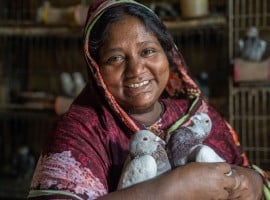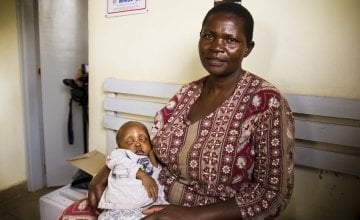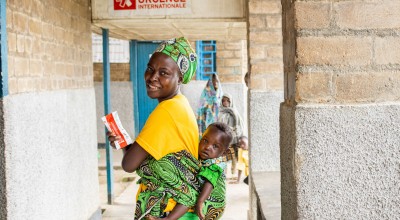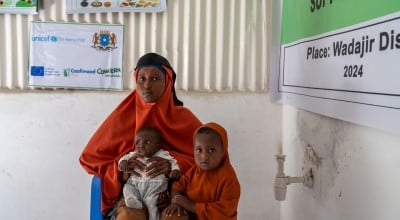
Read our 2024 annual report

Knowledge Hub
Getting to zero: working towards an end to AIDS

By 2030, the UN’s Sustainable Development Goals (SDGs) aim to have ended the epidemic of AIDS. Concern’s Global Health & HIV Adviser, Breda Gahan, reflects on progress made in the last 15 years in relation to this goal – and on the massive task that still remains ahead.
The problem of HIV
To set the context of this blog, here are some stark global facts from UNAIDS relating to 2014:
- 36.9 million people were living with HIV
- Over 2 million people in total died from HIV related illnesses
- Sub-Saharan Africa accounted for 66% of the global total of new HIV infections
Worldwide, AIDS-related illnesses are still the primary cause of death among women of reproductive age and, in 2014, 62% of new HIV infections among 15–19 year olds were among young women and girls.
People living with HIV who have not been diagnosed, and those who are not on effective antiretroviral treatment (ART), are more vulnerable to other diseases including TB and malaria. These diseases will kill them more quickly than people whose immune systems are not compromised by the negative effects of HIV. Without treatment, most people living with HIV develop AIDS and die.
Progress
In 2000, the UN agreed on eight Millennium Development Goals (MDG) which would address world poverty in all its many forms by 2015. Goal six aimed to “combat HIV and AIDS, malaria and other diseases”. Despite the scale of the problem of HIV and AIDS globally, there have been encouraging steps forward: there has been a 35% decrease in new HIV infections since 2000, and a 42% decrease in AIDS-related deaths since the peak in 2004.
Antiretroviral treatment is reaching more people than ever before, and HIV treatment is working where it is effectively delivered and people comply with the regimen.Despite this progress, however, there is no room for complacency in relation to this goal. Many countries in which malaria and TB are endemic still don’t provide universal life-saving prevention and treatment interventions. There is also a massive HIV treatment gap.
Of the total number of people infected with HIV today, only 41% of the adults – and 32% of the children – have access to treatment. The right to life and health is not being realised for adults and children living with HIV who have yet to access treatment. Prevention services for malaria, TB and HIV are inadequate everywhere.

Investment in health systems
The Ebola outbreak has demonstrated the devastating impact of health system collapse in Liberia and Sierra Leone. This seriously threatened the likelihood that the MDG targets could be achieved in these fragile countries recovering from years of conflict and lack of investment in health.
The strengthening of health systems is essential to ending HIV and AIDS. With the help of our funders, Concern Worldwide is supporting this goal in 22 of the countries where we work. Capacity building of front line health staff is paramount, as is payment, support and retention of national staff. We are also working to strengthen health systems on the delivery side for better diagnosis and treatment. Empowering communities with education, and resources for prevention and early testing, can also reduce the terrible human suffering caused by malaria, TB and HIV globally.
Leadership and commitment
It’s almost always the poorest people who suffer most from malaria, TB and HIV. Wealth and health inequalities can be reduced as has been shown in the leaps forward in the fifteen years up to 2015. But lack of leadership and commitment can reverse the gains achieved up to now. Delivery of the new Sustainable Development Goals by 2030 will require ongoing leadership, investment, commitment and implementation of interventions to prevent and treat the main diseases of poverty.
At a local level, let’s take our duty as global citizens seriously and lead by example by ending HIV and TB transmission in Ireland, and supporting an end to the spread of malaria globally. Let’s collectively call for adequate resources to be allocated by all countries, northern and southern. Let’s continue to impress upon our representatives the importance of Ireland committing to achieving the 0.7% GNI target for overseas development assistance.
Accountable targeted investment post-2015 can achieve optimum results by 2030. Let’s do it. Let’s stay on course and continue to advocate and act for sustained investment in health, and prevent HIV transmission. Health is wealth: it’s our greatest personal and public asset.
Follow us
Keep up to date with all of our work by following us on Instagram.





